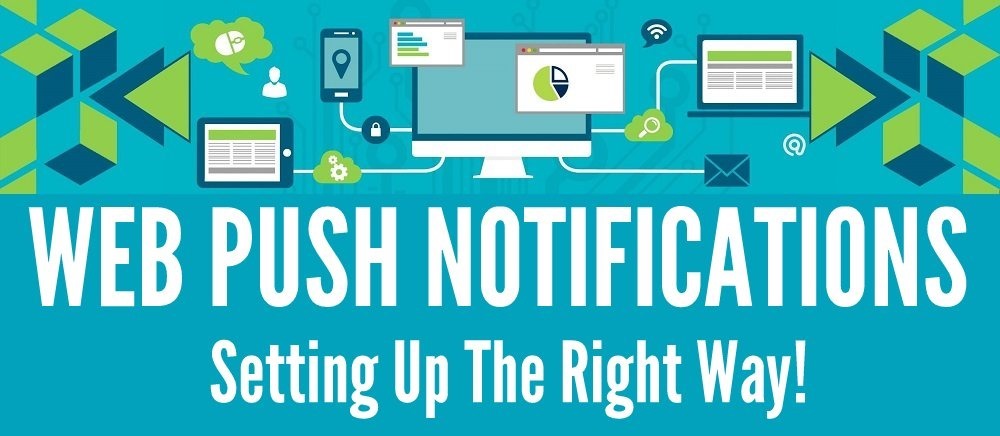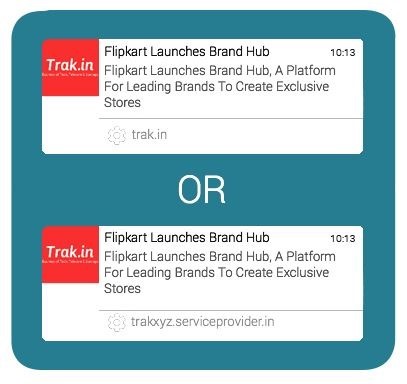Setting Up Web Push Notifications: The Right Way

The adoption of web push notifications as a communication channel is rocketing through the sky. Here are some key learnings from our iZooto journey. In this post we shall talk about the right approach towards this alternative communication channel.
Web Push Notifications have brought a relief to marketers and developers globally. As many as 10 billion Chrome Push Notifications are being sent Everyday. There are multiple reasons behind the rocketing adoption rate. Subscriber acquisition rate is faster than any other channel of communication – 30X times faster as compared to Email.
Apart from this, given the real estate occupied by notifications, the response and visibility will always remain high. It is hence, extremely important to give due weightage to some of the following pointers, as you setup this communication channel. Lets start from the basics:
Contents
Own Your Subscribers:
It is important to ensure that you setup web push notifications in a manner that you ‘own’ the subscribers across browsers. Given that web push notification is a browser specific feature, as a marketer and developer, you will be building subscriber base across different browsers. All the three browsers have a different setup process requirements. Here is quick overview of how you should configure for the three most popular browsers – Chrome, Safari and Firefox
- Chrome: Chrome requires you to generate a GCM Sender ID ( Now Firebase Sender ID ) and Server API Key. Read more here about how to generate one.
- Firefox: Firefox doesn’t tie subscribers with API keys, you can migrate your existing subscribers to a new platform easily with current implementation.
- Safari: Safari requires an APN certificate to be generated for push notifications. You need to be registered as a developer to generate these certificates. Registration cost itself is 99 USD. Nevertheless all the leading providers allow you to use their certificates. Given that Safari Push Notifications are only applicable for Desktop and a Safari has limited exposure, this often gets ignored. Nevertheless, to migrate you would need to get the Certificate and the keys. Check this to reach more about how you can generate APN certificate for your domain.
Why is it important to use your own key: If you are using a third party platform to push notifications, this will give you the ability to migrate – either to a different more feature rich platform or your in-house platform if you develop one.
Subscription Domain

We have known this for a while that only websites supporting and operating on HTTPS protocol can prompt users for subscription. The end user fundamentally subscribes to notification of a specific domain. This is a given for websites already on HTTPS protocol but for websites operating on HTTP protocol or without HTTPS, this creates a catchy situation. Here is how this is currently handled by some of the notification-as-a-service providers:
? Create a subdomain such as YourBrandName.XYZServierProvider.com and allowing users to subscribe to https://yourbrandname.xyzserviceprovider.com
? Your end users, in such cases will be subscribing to https://yourbrandname.xyzserviceprovider.com and hence will receive notifications from https://yourbrandname.xyzserviceprovider.com and not https://yourbrandname.com. You essentially lose ownership of these users and can’t migrate these users to a new platform as these are not tied to your domain.

To ensure that your brand name sticks around. What is the right approach ? There are three possible ways to look at this
- Configure a Sub-Domain Name of your brand
Create a CNAME entry pointing it to sub-domain of service provider and insisting service provider on taking consents on your sub-domain. For eg: With ‘notify’ as a CNAME entry pointing to yourbrandname.xyzserviceprovider.com, subscriptions would be taken on notify.yourbrandname.com. With this implementation a customer stalkbuylove.com would take subscriptions on notify.stalkbuylove.com instead of stalkbuylove.izooto.com.
- Create a single HTTPS Page
You can create an https page for taking subscriptions – https://yourbrandname.com/notifications – white the rest of your site resides on HTTP. With this implementation, subscribers will directly be linked to yourbrandname.com. So, https://trak.in would take consents on – all subscriptions tied to https://trak.in domain.
- Migrate to HTTPS
You can migrate your domain from HTTP to HTTPS by setting SSL up for your domain. My personal recommendation would be to try LetsEncrypt – an open source
Timing the Subscription Request

Subscription Requests on page load create a broken experience for the end user. It is critical to connect with the user, build trust, offer value and only then seek their consent for subscription.
Default Notification // Specific to Chrome
Notification delivery on Google Chrome can be a bit patchy at times, especially when the user’s device has limited connectivity. It is in these cases that a default notification is showcase to the end user. This creates a patchy experience for the end user, more than often confusing them, resulting in un-subscription. How can you avoid this ? There is little control that you exert over user’s connectivity but what you can ensure is define a default notification with a crispier communication. Do note that with the release of Chrome 51, Service-Workers are being phased out but it will take its own sweet time before users migrate to Chrome 51.
Welcome Notification
For a bulk of users, web push notifications are new. They are yet to get accustomed to seeing notifications popping out of the desktop screen. It is for this reason, you should setup a simple welcome notification that can be pushed to the user right after they subscribe. This doesn’t have to be necessarily fancy – but just as a plain Thank You message will suffice!
Details go a long way in creating delightful experiences. Creating delightful experiences is the only way to ensure that your users stick around with you. More on how to engage your users in the next post.
About the Author: Vivek Khandelwal is Co-Founder and CEO of IZooto, a web push notification service provider.
Disclaimer: Trak.in is a client of iZooto
